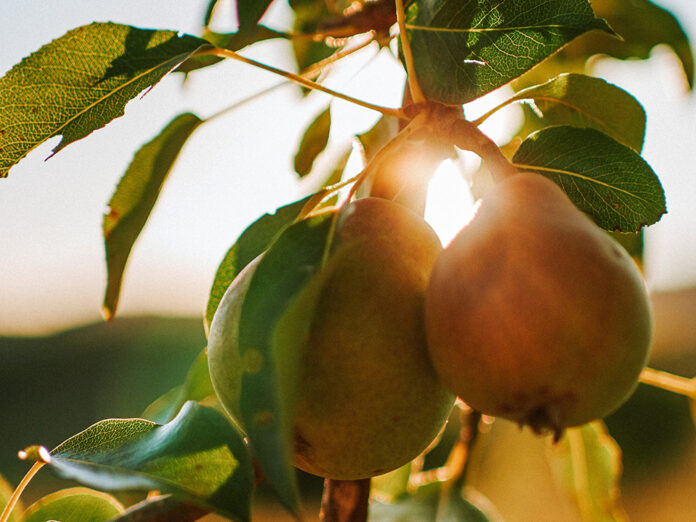
A philosophy advanced by Dave Wilson Nursery in California, wholesale supplier of
fruit trees to many of the better nurseries in Arizona, espouses high-density planting, enabling homeowners to plant several fruit tree varieties with different ripening windows in small spaces like our typical residential backyards.
Dense planting of different varieties can extend the normal 1-2 weeks of fruit harvest to 10-12 weeks and provide better cross-pollination of trees like pears, apples, plums and cherries.
Here are several approaches to consider: planting 3—4 trees in the same hole, espaliered trees or planting in hedgerows. For example, up to four trees may be planted 18-24 inches apart in a 4-foot-by-4-foot hole. Trees in hedgerows can be planted as close as 3 feet apart. Espaliered trees are trained flat against a wall or trellis, taking up very little space.
The key to success with these methods, although counter-intuitive, is SUMMER pruning! How does this work?
Reducing the tree canopy in summer reduces the number of leaves, in turn reducing photosynthesis, which reduces new growth as well as the food materials and energy to be
stored in the root system during late summer and fall. Consequently, the ensuing spring
growth is also reduced, thus controlling tree size. Dwarf or semi-dwarf rootstock will NOT
accomplish the same thing.
Proper pruning for the first three years of a deciduous fruit tree is an important start for
good form.
Apply summer pruning to successfully control the size of a fruit tree after the third year. Pick a height that will allow for easy pruning, thinning, netting and harvesting for YOU. Cut back any vigorous shoots that grow above that point then cut back all growth by half in late spring or early summer. Vigorous growers like apricots may need to be cut back in spring, early summer and again in late summer. Prune to outside buds and encourage horizontal branching; always remove dead, dying or diseased branches.
Single trees in a hedgerow should be pruned to vase shape (open center, no central leader). For multi-plantings in a single hole, thin out the center of the tree group to allow
sunshine into the interior of the grouping; cut back all trees in the group to the same height. To espalier or create a fan shape, cut back all branches that don’t grow flat and train the rest along the trellis for support.
You, too, can grow an extensive fruit orchard in your backyard by following these guidelines. Your trees will take up less space, allowing you to plant more of the fruit trees
you like. And you will enjoy an extended harvest and easier maintenance.
Rita Bricker is a Master Gardener.
Master gardener, 520-374-6263, 10 a.m.-2 p.m.; [email protected]
More on early pruning from University of Arizona.
This column appears in the July issue of InMaricopa magazine.

![Affordable apartments planned near ‘Restaurant Row’ A blue square highlights the area of the proposed affordable housing development and "Restaurant Row" sitting south of city hall and the Maricopa Police Department. Preliminary architectural drawings were not yet available. [City of Maricopa]](https://www.inmaricopa.com/wp-content/uploads/2024/04/041724-affordable-housing-project-restaurant-row-218x150.jpg)












![Affordable apartments planned near ‘Restaurant Row’ A blue square highlights the area of the proposed affordable housing development and "Restaurant Row" sitting south of city hall and the Maricopa Police Department. Preliminary architectural drawings were not yet available. [City of Maricopa]](https://www.inmaricopa.com/wp-content/uploads/2024/04/041724-affordable-housing-project-restaurant-row-100x70.jpg)


